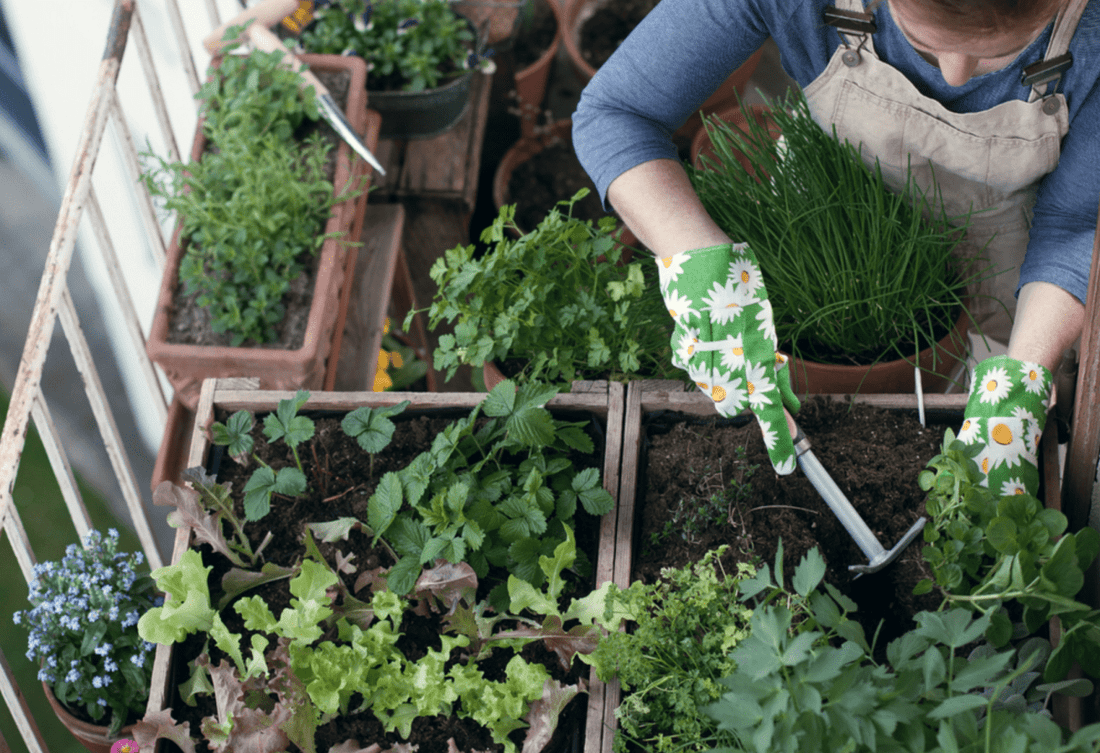Having your own garden with large trees, colorful flowers and fresh vegetables - a dream for many. Unfortunately, for people who live in a city, this often remains a dream. But with the principle of "urban farming", you can make this dream come true on your own terrace.
Having your own garden with large trees, colorful flowers and fresh vegetables - a dream for many. Unfortunately, for people who live in a city, this often remains a dream. But with the principle of "urban farming", you can make this dream come true on your own terrace.
Urban agriculture, which is exactly what is meant by "urban farming", is on the rise. More and more city dwellers are using every available space to grow food in densely populated centers. It is not uncommon to find several urban farming projects working together in large cities.
What is behind the term urban farming?
What makes growing in the city so special? How does urban farming differ from allotment gardens, for example? Well, for one thing, it's not (only) about self-sufficiency. Many urban farming projects sell their produce, be it at weekly markets, local restaurants or organic food stores nearby. The charitable distribution of produce to soup kitchens is also conceivable. Allotment gardens or backyard cultivation areas, on the other hand, serve the owners' own needs.
And while allotment gardens and domestic vegetable gardens are part of the planned inventory of a community, urban farming projects are created wherever there is space - on vacant lots, on roofs and terraces, sometimes in schools or public parks.
Where did the idea actually come from?
The "roots" of urban cultivation can possibly be traced back to the First World War. As the war devastated farmland across Europe, citizens were explicitly encouraged to use vacant plots of land within the city limits to grow vegetables. The idea took off during the Great Depression and in many cases contributed to survival.
And for the duration of the Second World War, cities and municipalities released even more land - with good reason, as the so-called "victory gardens" produced the equivalent of around 3 million US dollars worth of food (at the time). A considerable achievement, and a considerable proportion of the US production from urban farming was even shipped to soldiers overseas.
What can be grown in urban farming?
Everything that grows in a normal field also grows in an urban context. This includes vegetables of all kinds, salads, root vegetables, but also perennials such as corn. Fruit, especially berries, can also be grown easily, and even fruit such as apples, pears or peaches and much more can be planted - the latter, however, in specially designed trellis varieties. An urban farming project can be supplemented by keeping bees, which not only produce honey but also pollinate the plants, and small animals such as rabbits or guinea pigs, including poultry, can also be part of such projects.
What do urban farmers do?
There are of course limits to this type of cultivation. The most important of these are the very small areas. Therefore, the use of large machines is not possible and the work is largely done manually. In addition, many urban farming projects are working on how to grow more crops more effectively and sustainably in a small space. The methods usually come from organic farming - this applies to plant protection as well as pest control. Even water consumption is covered by ingenious systems, often from gray water or similar wastewater that is compatible with food cultivation. Urban farming also makes use of special lighting where there is a lack of sunlight, if there is no other option with the land. Everything is thought of to optimize the yield in a reasonable way.
The many advantages of urban farming
Growing in the city has many advantages. The most important of these is, of course, the availability of fresh produce that does not have to be transported far and packaged in an environmentally harmful way. In addition, the produce is often of organic quality.
In addition, green spaces and cultivated areas in the city help to clean the air and enable people to have close contact with nature. Children and young people in particular are given the opportunity to learn gardening - often the foundation for a lifelong fascination.
Quite a few municipalities make land available for urban farming. If you are interested in this type of sustainable agriculture on a small scale, but don't really have any space yourself, you can ask the city or municipality. Seeing something grow is a joy, increases the quality of life and enhances the entire environment. Urban farming definitely has a future!
Urban farming - on your own balcony
Of course, urban farming can also take place on a smaller scale, i.e. in your own home. Herbs and vegetables in particular are ideal for your own patio. Having fresh lettuce, basil and tomatoes on your plate every day is not only delicious and healthy, but also inexpensive. What's more, tending your own garden is not only sustainable, but also a fun and varied way to switch off for a while.
Although we at NIKIN are mainly committed to sustainability in fashion and the preservation of forests, we hope that our blog has sparked your interest in urban farming and motivated you to rethink your own lifestyle and possibly make it more sustainable.























